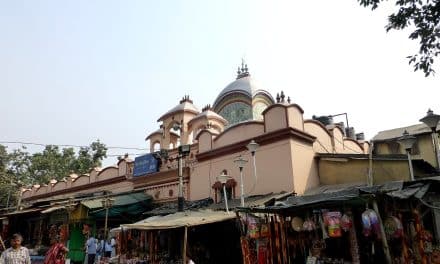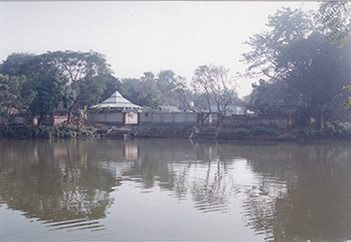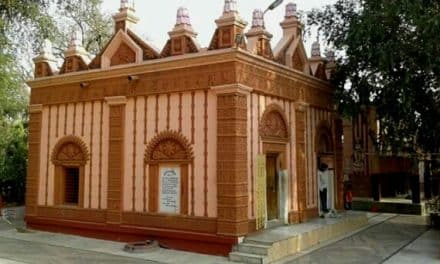Have you ever heard of such a shrine where Tantrik practices are performed more massively than any other temples in India? Yes, it only happens at Kamakhya Temple of Assam, India. Exactly located on the Nilachal Hill in the western part of Guwahati city in Assam, India. It is a Shakta temple of mother goddess Kamakhya, one of the oldest and most attractive of the 51 Shakti Peethas. It is the main temple comprising several individual temples of the ten Mahavidyas of Shaktism, embodiments of Kali, Tara, Tripura Sundari, Bhuvaneshwari, Bhairavi, Chhinnamasta, Dhumavati, Bagalamukhi, Matangi and Kamalatmika.
The origin
This temple originated as a sacrificial site on behalf of an Austroasiatic tribal goddess, Kameikha (old cousin-mother). Kalika Purana (written during the time of the Pala dynasty in the 10th century) and ‘Yogini Tantra’ have recorded that the goddess Kamakhya belonged to ‘Kirata’ origin.
The ancient dynasty ‘Varmans'(350-650) of ‘ Kamarupa’ kingdom and Xuanzang, a 7th- century great Viator of China, ignored the kamakhya temple, so it is assumed that worship of that temple was merely on Kirata- based (The Kirata is a generic term in Sanskrit literature for people who had habitats in the mountains) not like a traditional brahminical way.
The archaeological evidence shows that between the 8th and 9th centuries, the earliest temple was established by the Mlechha dynasty and later rebuilt by the Palas. In contrast, the Koch and the Ahoms patronised it. History had recorded that the Palas were the believers or followers of Tantrik doctrine. The ‘Kalika Purana’ was composed, making the Kamakhya temple familiar to the country rather than the world as a celebrated Tantrik centre. Vajrayana, one hand of Tantrik scriptures, along with mystic Buddhism referring to Buddist tradition associated with ‘Tantra’ and ‘Secret Mantra’, was developed in the medieval Indian subcontinent and gradually spread to Tibet, East Asia, Mongolia, and so many Himalayan states.
Medieval times
There is a rumour that the Kalapahar, a general of Sulaiman Karrani(1566-1572), destroyed this temple. But the historical records say that temple reconstruction was completed in 1565. So, it can be safely assumed that Kalapahar was not responsible for that destruction. In contrast, Hussain Shah of the ‘Kamata’ kingdom did an invasion of the east in the year 1498. Hence it can be supposed that he might be responsible for that mishap. However, the remnants of the temple were found between 1515-1540 by Vishwasingha, the founder of the Koch dynasty. He restarted the worship at the temple during the kinghood of his son, Nara Narayan(1540-1587). In reconstructing the destroyed temple, materials were used from the remnants of the original temple. The original temple, ‘Bandhana’ was clearly in the style of ‘Nagara’ type(The Nagara or North Indian temple style) but possibly of the ‘Malava’ style(The name ‘Malava’ is derived from the Sanskrit term ‘Malav’ that means ‘part of the abode of ‘Lakshmi’.)
Naraka Chaturdashi
In accordance with the ‘Kalika Purana’, Kamakhya temple is that place where Devi Sati used to appear to fulfil her affection with ascetic Lord Shiva, and it is also that place where Devi Sati’s ‘yoni'(fanny/womb) fell after Lord Shiva started his tandava(a divine dance) with the corpse of Sati. So, it is a place of 51 Shakti Peethas.
Another legend says that Naraka was the legal ancestor of the ‘Kamarupa(form of desire) Kings. Once upon a time, he placed his proposal of marrying Devi Kamakhya, being very inclined with her. Then Devi Kamakhya took the assistance of deception. She also placed a condition on Naraka to build a stairway from the base of the Nilachal Hill up to the temple before dawn. If so, then she will be positively tied with him through an auspicious occasion, a wedding.
Naraka took her condition as a penance rather than a hard challenge of life and started his work to complete it within the assigned time. According to that, he was almost at the lintel of accomplishing his challenge before dawn. Naturally, Devi Kamakhya was concerned and then she suffocated a cock to make it crow to establish that it was dawn before due time to Naraka. Being cheated by Devi Kamakhya, Naraka gave up his helm to complete his challenge halfway. Being very intoxicated in pride, Naraka vanquished almost all of the kingdoms on the earth into his handfuls. Next, he affixed his eyes to the ‘ Swargaloka'(heaven).
Lord Indra himself became very terrified before his might, and he had to slip away from heaven. As Naraka was the son of Lord Vishnu, Lord Indra recoursed to him along with all the Devas to rescue them from that horrible demon. Meanwhile, Naraka stole the earrings of ‘ Aditi’ (the divine mother goddess and a relative of Satyabhama, consort of Lord Vishnu) and acquired a few of her territories. Not only that, he kidnapped nearly 16,000 women. Being informed of all these damnable jobs, Lord Vishnu reassured the Devas to take a step when he would be embodied as ‘Krishna’. Aditi appeared before Satyabhama for justice. Satyabhama came to know of all the nasty activities of her son, Narakasura, and she proposed to her husband, Lord Krishna, to take an adamant step against their son.
According to the promise, Lord Krishna attacked Narakasura’s fort along with his wife, Satyabhama. The war was tackled drastically. Lord Krishna slew all of Narakasura’s army, including Mura, Narakasura’s general, terribly but with a little effort. That’s why Lord Krishna is recalled by the name ‘Murari’ among his 108 names. Narakasura tried his best to win that battle and tried, at last, to kill Lord Krishna with a trident. That time Narakasura saw Kamakhya standing beside Lord Krishna. And within a moment, Lord Krishna slew his beloved son with his Sudarshana Chakra. That was possible only because Maya was created by the goddess Kamakhya. A few whiles before of death, Narakasura requested earnestly to his mother, Satyabhama, to have a blessing that everyone would mother that day like a colourful day all over the universe. He was at last blessed with his prayer. Since that day, the incident has been celebrated as a ‘Naraka Chaturdashi’ before the day of Diwali every year.
Iconography
Goddess Kamakhya is stated in the Hindu scripture as a young girl of 16 years old. She is with twelve arms and six heads of various colours, decorated with adequate jewellery and red flowers of hibiscus. In each of her ten hands, she holds a lotus, trident, sword, bell, disc, arch, shafts, maul, goad and buckler, respectively. The rest of the two hands hold a bowl made of gold or a skull. She is sedentary upon a lotus directly on top of her husband, Lord Shiva, who himself lies on a lion. Both sides are acquired from her god Brahma and god Vishnu who is seated on a lotus also.
The ‘ Kalika Purana’ describes goddess Kamakhya on its pages as a form or output of all desires. Goddess Kamakhya belongs to Shaktism, and its tradition of worship is tantra. The worship of goddess Kamakhya complies with both ways, such as the Vamachara(Left-Hand Path) and the Dakshinachara(Right-Hand Path). Goddess is usually offered red flowers(hibiscus), and sacrifices of animals are mandatory practices here. But in general female animals are not granted for sacrifice.
Every year thousands of devotees attend the temple for its famous Ambubachi Mela. Durga puja and Manasha Puja are also celebrated here.
At last, we, the devotees and the well-wishers of the temple, pray earnestly to the almighty mother that Tantrik practices may go by to the welfare of humanity.
How to reach
Tourists can reach the temple via road, rail and air. Guwahati International Airport or Lokpriya Gopinath Bordoloi International Airport is the closest airport to Kamakhya Temple. Tourists can also get off at the Guwahati rail station and travel about 8 km by Auto or Taxi to reach the temple base. After that, one must be prepared for a trek to the hilltop as most of the Devi temples are on the hilltop. There is a Palanquin service to the temple of Kamakhya Devi for the elderly. It also has a medical camp and a museum.
It is advisable to book lodging and freshen up before visiting the temple, as the queue for Devi Darshan sometimes can take up to 4 to 5 hours. Many travellers suggest that it’s best to visit early in the morning, and there is a quick VIP service available if you would like to bypass the long queue.
Image courtesy: Kunal Dalui
















